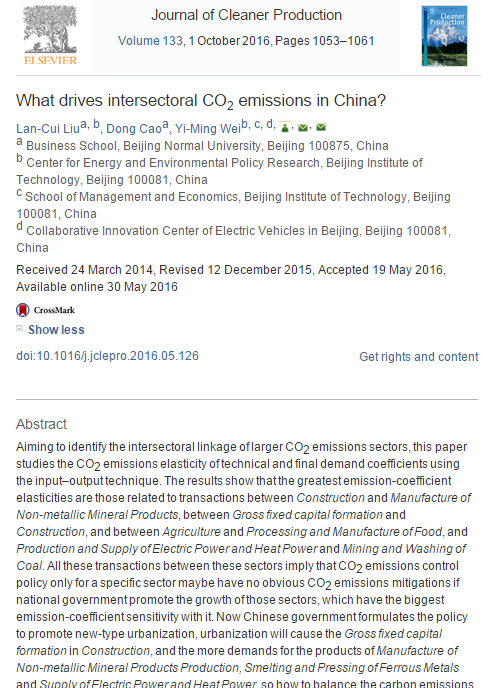
Recently, the article What drives intersect oral CO2 emissions in China produced by Professor Yi-Ming Wei and Professor Lan-Cui Liu was published on the Journal of Cleaner Production, corresponding ISSN is 2016, Vol. 133, page 1053-1061.
Aiming to identify the intersectoral linkage of larger CO2 emissions sectors, this paper studies the CO2 emissions elasticity of technical and final demand coefficients using the input–output technique. The results show that the greatest emission-coefficient elasticities are those related to transactions between Construction and Manufacture of Non-metallic Mineral Products, between Gross fixed capital formation and Construction, and between Agriculture and Processing and Manufacture of Food, and Production and Supply of Electric Power and Heat Power and Mining and Washing of Coal. All these transactions between these sectors imply that CO2 emissions control policy only for a specific sector maybe have no obvious CO2 emissions mitigations if national government promote the growth of those sectors, which have the biggest emission-coefficient sensitivity with it. Now Chinese government formulates the policy to promote new-type urbanization, urbanization will cause the Gross fixed capital formation in Construction, and the more demands for the products of Manufacture of Non-metallic Mineral Products Production, Smelting and Pressing of Ferrous Metals and Supply of Electric Power and Heat Power, so how to balance the carbon emissions in larger emissions sectors and rapid urbanization is a big challenge for decision-makers.
